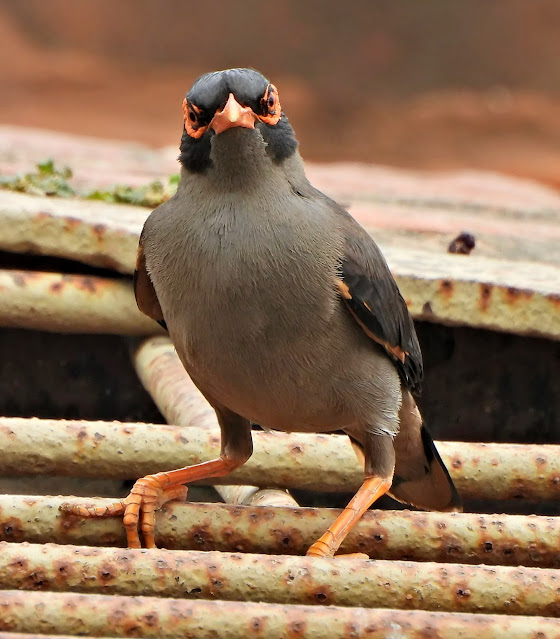The common myna, also known as the Indian myna (Acridotheres tristis), is a member of the starling family Sturnidae. This bird is distinguished by its brown body, black hooded head, and the striking bare yellow patch behind its eye. The bill and legs are a vivid yellow, and there is a notable white patch on the outer primaries. The wing lining on the underside is white, and both sexes appear similar, often seen in pairs.
To identify the common myna, look for the following characteristics:
Brown body with a black head
Yellow patch behind the eye
Bright yellow bill and legs
White patch on the outer primaries
White wing lining on the underside
The common myna is highly adaptable and thrives in a variety of habitats, including open woodland, cultivation, and urban environments. It has a strong preference for areas with tall structures and minimal ground cover, which are typical of city landscapes.
Originally from Asia, the common myna's range has expanded due to introductions across the globe. It is now found in many parts of the world, including North America, Australia, New Zealand, and various islands in the Indian and Pacific Oceans.










%202.jpg)



%203.jpg)
%202.jpg)
%201.jpg)
%201.jpg)



%2010.jpg)
%2020.jpg)

%201.jpg)
%2020.jpg)
%2020.jpg)
%2020.jpg)
%2020.jpg)
%2021.jpg)
%2022.jpg)
%2020.jpg)
%2021.jpg)
%2022.jpg)